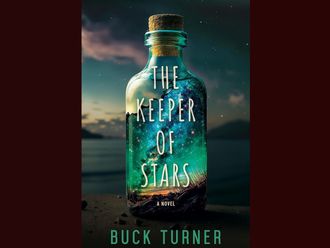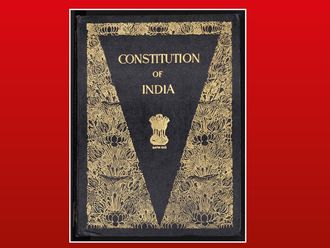Above the entrance to Centre Court at Wimbledon, the home of British tennis, there is an inscription bearing the two most famous lines from Rudyard Kipling’s inspirational poem If, an epic evocation of British virtues of dignity and courage in the face of adversity.
‘If you can meet with Triumph and Disaster
And treat those two impostors just the same.’
Such rousing, powerful verses are particularly resonant for Britain’s Andy Murray, who last Sunday wiped away memories of childhood tragedy to make history by ending his country’s 77-year wait for a British men’s Wimbledon champion. In defeating world No 1 Novak Djokovic 6-4, 7-5, 6-4, Murray said his second Grand Slam trophy, which he added to his 2012 US Open crown, was “the pinnacle of my career” — a triumph to top all triumphs. The 26-year-old’s landmark success also led the British Prime Minister, David Cameron, to call for him to be knighted.
While such an honour may be premature, Murray’s magnificence against all the odds unreservedly deserves the relentless acclaim he has received during last week, given the fact that he has surmounted personal tragedy, a public hate campaign, physical problems and self-doubt along the way.
The doughty Scot first served notice of his youthful promise for tennis by batting balloons around his living room at the tender age of two and then excelling at Swingball in the garden, inspired by his mother Judy, a tennis player-turned-coach. But it would not be long before the youngster would be forced to meet with the impostor of disaster.
On March 13, 1996, a former scout leader who had once looked after Murray and his older brother Jamie in a youth group, Thomas Hamilton, burst into their school Dunblane Primary and shot dead 16 schoolchildren and their teacher Gwen Mayor. He then turned the gun on himself. Murray, who was just eight at the time, escaped the bloodbath by hiding in one of the classrooms. For years afterwards, the horrific happenings were too intolerable for Murray to contemplate or speak about publicly. Yet, they also galvanised his desire to succeed on the sporting stage to give the tormented souls of Dunblane something to be proud of.
Indeed, so determined was Murray to pursue his tennis dream that, at the age of 12, he spurned the advances of one of Scotland’s biggest football clubs, Glasgow Rangers, to hone his racquet skills at Barcelona’s Sanchez-Casal Open Sports Club tennis academy. It was a brave move that would reap early dividends for Murray when he fulfilled his burgeoning talent by winning the junior US Open trophy in 2004 at the age of 17. Three years later, he broke into the world’s top 10.
All the while, though, he had had to battle growing pains, frequent bouts of cramping and a bipartite patella (split kneecap) which he was born with. Thankfully, though, Murray’s injury concerns have been long consigned to history. He now ranks as one of the fittest players on the men’s tennis tour — thanks to his impressive dedication to punishing training regimes involving gruelling gym work and excruciatingly painful ice baths.
However, the task of winning trophies in a gilded era for tennis featuring the stellar trio of Roger Federer, Rafael Nadal and Novak Djokovic, has remained a mountainous one and been the source of much mental misery for Britain’s finest tennis player.
In the face of such imperious opposition, Murray suffered Grand Slam final losses in 2008, 2010, 2011 and 2012, raising fears in Britain that he was destined to be a nearly man in tennis terms. To compound matters, he has also had to contend with being characterised by some sectors of the British media as a dour, surly and dislikeable Scot. It is an image that has been created by his occasional displays of on-court petulance — the perfectionist Murray having the tendency to lambast himself or rail at his support team for any mistake that flowed from his racquet — as well as by his perceived monotonous voice and lack of charisma.
In 2006, he committed the supposed mortal sin in the eyes of many English people for making a throwaway, jokey remark that he would support anyone but the England football team at the World Cup.
How he would live to regret that unfortunate remark! A barrage of hate mail came the stunned Scot’s way, angry English people outraged at his perceived anti-Englishness. Yet, such statements were faintly ridiculous and unfair in the extreme. For, despite being a proud Scot, the fact that he is definitely not a hater of the English is resoundingly borne out by the fact that Murray’s girlfriend Kim Sears, best friend Ross Hutchins and key support staff members are from south of the Scotland-England border.
What Murray’s legion of critics have also failed to point out is the context of the interview that damned him — the Scot was responding in kind to light-hearted jibes from fellow interviewee, the former British tennis player, Tim Henman, and interviewer, Daily Mail journalist Des Kelly, about Scotland’s continued absence from the football World Cup.
All that was largely forgotten when Murray wept on court and was universally praised for baring his soul after suffering a gut-wrenching defeat to Roger Federer in last year’s Wimbledon final. It was a seminal moment, which resulted in a seismic shift in British people’s view of Murray who, riding on the crest of patriotic fervour, powered to men’s singles Olympic glory over Federer on home soil a month later.
A key factor in this victory and Murray’s improved mental focus was Ivan Lendl, the eight-time Grand Slam champion, who became the Scot’s coach last year and who has proved a reassuring and calm presence for the British world No 1, given his vast experience in the game.
Another big breakthrough for Lendl’s protege came in September last year when he secured his first Grand Slam trophy after overcoming great rival Djokovic in five sets at the US Open.
Murray evoked further public sympathy and support for his Wimbledon bid when he broke down when recalling the Dunblane massacre during a fly-on-the-wall BBC television documentary last month.
The programme was an excellent and very timely piece of PR for Murray, showcasing both his rarely seen sensitive side and sense of humour when bantering with his close-knit support team. It also showed that he enjoys a charmingly down-to-earth and grounded relationship with girlfriend Kim.
Murray said the paparazzi had in previous years around the time of Wimbledon camped outside the house the pair share in Surrey, eager for a slice of scandal with which to titillate their readers. They soon gave up on their muck-raking mission, though, he laughingly revealed, by the “fifth or sixth dog walk” — a favourite pastime of the unaffected couple. The documentary was TV gold for Murray and won him even more admirers to cheer him on as he embarked on a tumultuous journey to ultimate glory on Centre Court last Sunday.
The impostor ‘disaster’ was nowhere to be seen. Only ‘triumph’ had gatecrashed the party.








